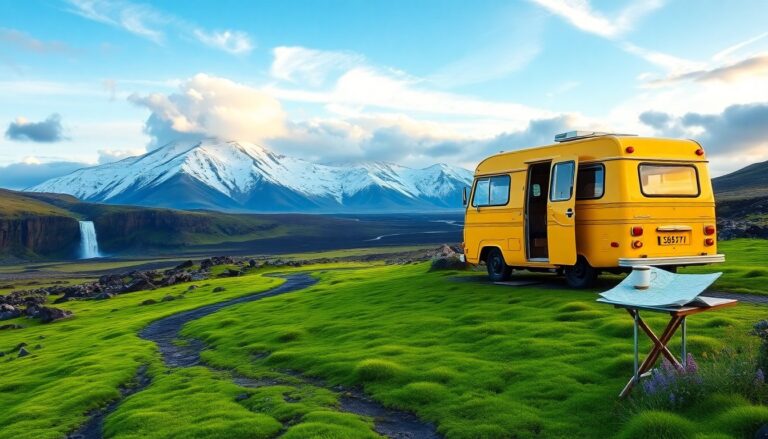Argomenti trattati
Traveling to Iceland on a budget may appear challenging, but it is achievable with careful planning. This guide offers practical tips and strategies to help you experience Iceland’s breathtaking landscapes and rich culture while keeping expenses in check.
Understanding essential costs
Managing your budget in Iceland requires an understanding of the main expenses you will face. The three primary costs to consider are transportation, accommodation, and food. While there are methods to minimize expenses related to meals and activities, these key areas will have a substantial impact on your overall budget.
Timing your visit
Selecting the optimal time to visit Iceland is essential for budget-conscious travelers. Winter typically offers lower prices, but limited daylight hours may impact the overall experience. In contrast, summer provides extended daylight but comes with increased costs. A practical option is to travel during the shoulder season, especially in May, when both prices and weather conditions are favorable.
Analyzing accommodation demand can assist in identifying the most cost-effective travel periods. Data shows reduced occupancy rates in spring and autumn, leading to more favorable deals on lodging and car rentals. It is recommended to book accommodations well in advance to secure the best available rates.
Exploring Iceland on a budget
Renting a car is among the most cost-effective methods to navigate Iceland, particularly for groups. While public transportation options exist, they often come with higher costs and logistical challenges. For instance, a bus journey from Reykjavík to the picturesque black sand beaches of Vík can exceed $70 per person and may require significantly more time than driving independently.
Choosing the right vehicle
Selecting a rental car requires careful consideration of your planned journey. For most travelers, a compact vehicle is often adequate, especially if you intend to avoid rugged F-Roads. This choice not only reduces rental costs but also enhances fuel efficiency. If traveling with friends, sharing expenses can further lower costs.
It is essential to choose a rental company that provides comprehensive insurance. Vehicle damage can lead to significant repair expenses, so safeguarding your investment is crucial. Additionally, refuel at self-service stations, which typically offer lower prices. If you have a Costco membership, you may also find further savings at their Reykjavík location.
Accommodation options to consider
Booking accommodation in advance is crucial for travelers. Demand for budget-friendly options in Iceland frequently surpasses availability, resulting in higher prices as travel dates draw closer. Potential options include hostels, guesthouses, and campsites, which can provide suitable lodging for varying budgets.
Camping as a budget-friendly alternative
Camping represents a cost-effective accommodation option for travelers. However, it is essential to recognize that wild camping is prohibited in Iceland. Instead, travelers should consider investing in a camping card, which provides access to numerous official camping sites throughout the country. This card can substantially lower accommodation costs, particularly for those planning to camp over an extended period.
For individuals who prefer traditional lodging, simple guesthouses may offer competitive rates compared to hostels. Many guesthouses come equipped with kitchen facilities, enabling guests to prepare their own meals and reduce dining expenses. Dining out in Iceland can be expensive, with a typical meal, such as a takeout burger, costing approximately $19.
Saving on food and activities
Travelers can manage food expenses by opting for self-catering whenever possible. Budget supermarkets such as Bónus and Krónan provide a variety of affordable options, making it convenient to prepare meals while on the move.
For those wishing to experience local cuisine without excessive spending, gas stations offer quick bites, including hot dogs and simple meals, at significantly lower prices than restaurants. Furthermore, Iceland’s clean tap water allows visitors to save on beverage costs by using a refillable water bottle.
Embracing free attractions
Many of Iceland’s most breathtaking attractions, including waterfalls, scenic landscapes, and the northern lights, can be enjoyed at no cost. While some paid activities may be appealing, travelers should consider alternatives that offer similar experiences without the significant expense. For example, instead of scuba diving in Silfra, a snorkeling adventure may provide a more affordable option while still showcasing stunning views of the underwater landscape.
Additionally, rather than visiting the Blue Lagoon, travelers can explore natural hot springs or lesser-known geothermal pools, which often deliver a more authentic experience at a fraction of the cost.
Traveling to Iceland on a budget is feasible with careful planning and informed choices. By understanding costs, selecting the right time to visit, and prioritizing affordable accommodations and activities, travelers can maximize their Icelandic adventure without overspending.

